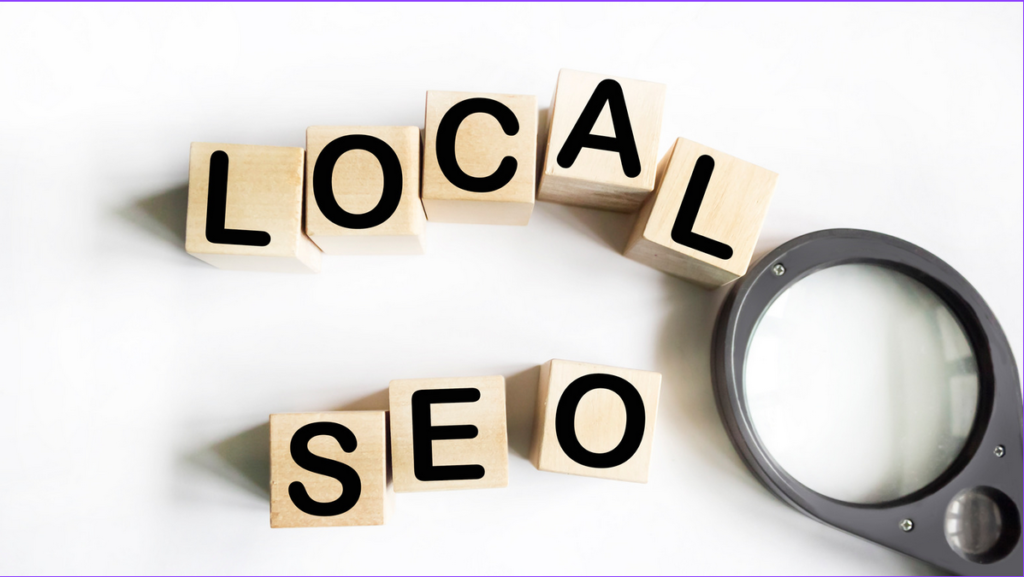In this blog, we’ll explore why Local SEO is essential and how it can help your business thrive.
Local SEO Tactics?
Definition
Local SEO is a targeted form of search engine optimization that improves a business’s visibility in location-based search results. Unlike general SEO, which aims to boost a website’s ranking for a broad range of search terms, Local SEO explicitly optimizes your online presence for geographically relevant searches.
This makes it ideal for businesses that attract customers from a particular area, such as restaurants, retail stores, or service providers.
How it Works
Local SEO works by prioritizing location-based searches. When users search for a product or service “near me” or include their location in the query, Google’s algorithm prioritizes results that are geographically close to the user. The search engine considers factors like proximity, relevance, and reviews to display the most useful local businesses.
Optimizing your business for Local SEO ensures you show up in these local search results, making it easier for nearby customers to find you.
Benefits of Local SEO for Small Businesses
Increased Visibility
Local SEO helps small businesses stand out by ensuring they appear in search results when nearby customers are looking for relevant products or services. When someone searches for a service “near me,” Google prioritizes local businesses, giving you a better chance of being seen by potential customers.
This increased visibility can drive foot traffic to your store or more clicks to your website, ultimately boosting your presence within your community.
Targeted Traffic
Unlike general SEO, which casts a wide net, Local SEO brings highly targeted traffic to your business. By focusing on users searching within your area, you’re reaching an audience that’s already close to your location and more likely to engage. This type of targeted traffic is valuable because local customers often have an immediate need, making them more likely to visit your store or make a purchase.
Higher Conversion Rates
Local searches tend to have higher conversion rates because people searching for local businesses are usually ready to act. Whether they’re looking for a nearby restaurant, salon, or service provider, they’re often looking to make a decision quickly.
Optimizing for Local SEO ensures you’re front and center when they’re ready to buy, increasing the likelihood that they’ll choose your business over a competitor.
Key Components of Local SEO
Google My Business
One of the most critical elements of Local SEO is optimizing your Google My Business (GMB) listing. When users search for services or products near them, Google prioritizes businesses with complete and optimized GMB profiles. By ensuring your business name, address, phone number (NAP), and hours of operation are accurate and consistent, you increase your chances of appearing in local search results, Google Maps, and the coveted local “3-pack” displayed at the top of search results.
Local Citations
Local citations refer to your business’s mention on other websites, directories, and platforms like Yelp, Facebook, or local chambers of commerce. Having consistent and accurate business information (NAP) across these citations is crucial for Local SEO. Inaccuracies or inconsistencies can confuse search engines and hurt your ranking.
A well-maintained presence on these platforms helps improve local search visibility and ensures potential customers can easily find and contact your business.
Reviews and Ratings
Positive customer reviews and high ratings are powerful drivers for Local SEO. Google considers reviews a signal of credibility and trustworthiness. Businesses with more positive reviews are ranked higher in local search results and tend to attract more customers.
Encouraging satisfied customers to leave reviews and responding to positive and negative feedback can enhance your reputation and boost your business’s local SEO performance.
Mobile Search and Local SEO
Mobile Searches and “Near Me” Queries
Mobile searches have significantly impacted Local SEO, especially with the rise of “near me” queries. Users frequently search for nearby businesses while on the go, and Google prioritizes showing local results for these queries. Mobile users typically want quick, actionable results, whether looking for a restaurant, a mechanic, or a store.
Optimizing for Local SEO ensures your business appears when people search for services near their current location, making you more accessible to potential customers.
Optimizing for Mobile
Having a mobile-friendly website is essential for Local SEO and user experience. When users visit your website from a mobile device, they expect it to load quickly, be easy to navigate, and provide the necessary information. Google also uses mobile-first indexing, meaning websites optimized for mobile perform better in search rankings.
Ensuring your website is responsive, fast, and user-friendly improves your chances of ranking higher in local search results while offering mobile users a seamless experience.
Local SEO vs. Paid Advertising
Long-Term vs. Short-Term Investment
Local SEO is a sustainable, long-term investment that builds your online presence gradually. By optimizing for local searches, your business gains visibility over time and can continue attracting customers without ongoing spending. In contrast, paid advertising, such as Google Ads, provides immediate but short-lived results, requiring continuous investment to maintain visibility.
While paid ads can drive quick traffic, Local SEO offers ongoing benefits, making it a more reliable strategy for long-term growth.
Cost-Effectiveness
Local SEO often provides a better return on investment for small businesses with limited marketing budgets than paid ads. Once you’ve optimized your website and Google My Business listing, you can continuously attract organic local traffic without incurring ongoing costs.
Paid advertising, on the other hand, requires consistent spending to maintain traffic. Over time, the cumulative cost of paid ads can be much higher than the upfront investment in Local SEO, making SEO a more cost-effective solution for sustained business growth.
Common Local SEO Mistakes to Avoid
Ignoring Mobile Optimization
Not optimizing for mobile can severely hurt your Local SEO efforts. With more people searching for local businesses from their smartphones, having a website that doesn’t load quickly or function well on mobile can lead to poor user experience and higher bounce rates. Google prioritizes mobile-friendly websites in search rankings, so neglecting mobile optimization can result in lower visibility and missed opportunities to attract potential customers.
Inconsistent NAP (Name, Address, Phone)
One of the most common Local SEO mistakes is having inconsistent NAP (Name, Address, Phone) information across different listings and directories. Inconsistencies confuse search engines and potential customers, which can lead to lower rankings in local search results.
Ensuring that your business’s NAP details are consistent and accurate across your website, Google My Business, and local directories is crucial for building credibility and improving Local SEO performance.
Neglecting Customer Reviews
Failing to manage customer reviews can negatively impact your Local SEO rankings. Reviews serve as trust signals for search engines and potential customers, and businesses with more positive reviews are often ranked higher in local searches.
Neglecting to encourage reviews or responding to positive or negative feedback can harm your business’s reputation and limit your Local SEO success. Actively managing and responding to reviews shows engagement and helps build a more substantial online presence.
How to Get Started with Local SEO
Start with Google My Business
The first step to improving your Local SEO is setting up and optimizing your Google My Business (GMB) profile. Ensure your business name, address, and phone number (NAP) are accurate and consistent with your website.
To enhance your listing, add critical details like business hours, a short description, and relevant photos. Regularly update your GMB profile and respond to customer reviews to keep it active and engaging.
Build Local Citations
Local citations mention your business on Yelp, Facebook, and local directories. List your business in relevant directories and ensure that your NAP information is consistent across all platforms.
Inconsistent information can confuse search engines and affect your local rankings. Building strong local citations helps improve your business’s online visibility, making it easier for customers to find you in local searches.
Encourage Reviews
Customer reviews play a significant role in boosting your Local SEO and building credibility. Encourage satisfied customers to leave reviews by making the process easy – through follow-up emails, in-person requests, or links on your website.
Positive reviews not only improve your ranking but also attract potential customers. Always respond to reviews, whether positive or negative, to show that you value customer feedback and are engaged with your audience.
Conclusion
I’ve seen firsthand how Local SEO can turn a struggling business into a thriving one. It ensures that your business is visible when local customers search for your services or products. Small changes can lead to big results in terms of local growth.





Pingback: get enclomiphene american pharmacy
Pingback: medicament kamagra pharmacie fournir medicaments
Pingback: get androxal cost per tablet
Pingback: buy cheap flexeril cyclobenzaprine generic does it work
Pingback: online order dutasteride generic work
Pingback: ordering gabapentin generic low price
Pingback: cheapest buy fildena generic online cheapest
Pingback: ordering staxyn generic no prescription
Pingback: itraconazole mail order uk
Pingback: cheapest buy avodart generic good
Pingback: buy cheap generic online xifaxan
Pingback: cheapest buy rifaximin price london
Pingback: phizer značka kamagra vyrobené v usa